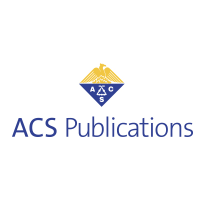Important Compound Classes

Title
Patent Publication Number
Publication Date
Priority Application
Priority Date
Inventors
Assignee Company
Disease Area
Biological Target
Summary
 The invention in this patent application relates to hexahydro-5,8-epoxycyclohepta[c]pyrazole derivatives represented generally by either formula 1 or formula 2. These compounds are CB1, CB2, or dual CB1/CB2 agonists and may be useful for the treatment of a wide variety of diseases and disorders including but not limited to appetite, diabetes, obesity, glaucoma associated intraocular pressure, mood disorders, seizures, cognition disorders, memory disorders, respiratory disorders, gastrointestinal disorders, and cardiovascular disease.
The invention in this patent application relates to hexahydro-5,8-epoxycyclohepta[c]pyrazole derivatives represented generally by either formula 1 or formula 2. These compounds are CB1, CB2, or dual CB1/CB2 agonists and may be useful for the treatment of a wide variety of diseases and disorders including but not limited to appetite, diabetes, obesity, glaucoma associated intraocular pressure, mood disorders, seizures, cognition disorders, memory disorders, respiratory disorders, gastrointestinal disorders, and cardiovascular disease.
Key Structures

Biological Assay
-
Assaying agonism of CB1 or CB2 by detection of cAMP using homogeneous time-resolved fluorescence (HTRF)
Biological Data
 “LA” denotes compounds with EC50 > 5 μM and/or %Emax < 50
“LA” denotes compounds with EC50 > 5 μM and/or %Emax < 50Recent Review Articles
| 1. |
Kiskova, T.; Mungenast, F.; Suvakova, M.; Jager, W.; Thalhammer, T. Int. J. Mol. Sci. 2019, 20(7), 1673. |
||||
| 2. |
Haugh, O.; Penman, J.; Irving, A. J.; Campbell, V. A. Curr. Drug Targets 2016, 17(16), 1834–1840. |
||||
| 3. |
Gyires, K.; Zadori, Z. S. Curr. Neuropharmacol. 2016, 14(8), 935–951. |
||||
| 4. |
Zogopoulos, P.; Vasileiou, I.; Patsouris, E.; Theocharis, S. E. Fundam. Clin. Pharmacol. 2013, 27(1), 64–80. |
||||
| 5. |
Shohami, E.; Cohen-Yeshurun, A.; Magid, L.; Algali, M.; Mechoulam, R. Br. J. Pharmacol. 2011, 163(7), 1402–1410. |
||||


